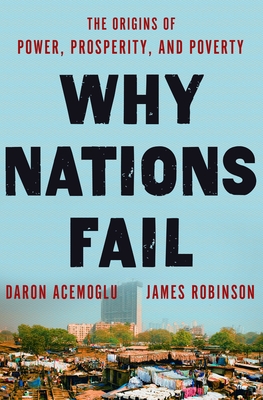Why Nations Fail: The Origins of Power, Prosperity, and Poverty
Daron Acemoğlu

This was a pretty interesting book, and also the first book that I have read on a Kindle library loan. Thanks Brooklyn Public Library!
The authors basically counterpose their argument against that offered by Jared Diamond in “Guns, Germs, and Steel”, namely that geographic factors are a key determinant of economic success. A&R focus their attention on many cases where nations with more or less indistinguishable cultures have seen drastically different outcomes, such as North and South Korea, and argue that the key determining factor is the “inclusiveness” of economic and political institutions; that is, how much they provide opportunity to a wide spectrum of people.
This seems to me a worthwhile argument as far as it goes, and the authors provide many compelling examples to illustrate their point from many different parts of the world. It’s an important policy insight to see that many nations may have “failed” economic institutions because the elites are better off that way, and not just in obvious examples such as North Korea. However, I think the contrast with Diamond’s ideas is a bit too overdrawn, and that it is more of a “both/and” than an “either/or” situation.
Also, while “inclusive institutions” is an interesting frame for historical analysis, it is a slippery concept to try to use for current analysis. The authors don’t give any quantitative measures of inclusiveness, and while I don’t exactly blame them for that, it makes the concept susceptible to hindsight bias. It is easy to look back at a failed state and see the ways in which its institutions were extractive, or conversely to look at a success story and enumerate ways in which its institutions were inclusive. But how do we do that today, without the benefit of knowing the ultimate outcome? For example, many people would say that America’s economic institutions today are becoming less inclusive than they used to be, but are they doing so to a degree that is relevant for A&R’s analysis? To their credit, they do try their hand at some prognostication in the final chapter, for example arguing that China’s growth is not sustainable under its current institutions. But this book leaves many of the policy questions open; for instance, if one is interested in promoting inclusiveness in the economic and political institutions of one’s nation, are there certain policies it is best to push for? Perhaps that is for the sequel…